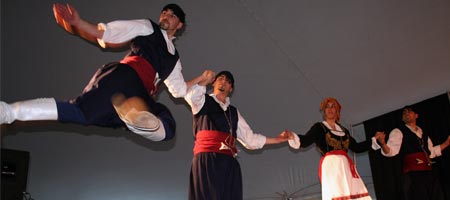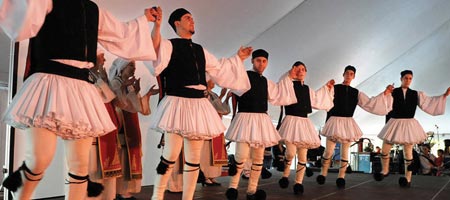Our Passion for Greek Dance
History
From ancient Greece to the contemporary era, dance has always been a part of the everyday life. There are many ancient sources that depict and describe Greek dance since the earliest history of the Greeks. Sources such as Plato, Aristotle, Homer, Xenophon and many others give reference, description, theory and criticisms on dance during their times.
Recently we began to document Greek dances in detail. There are many correlations between the nature of Greek dance done in ancient times and the modern era that we see danced for celebratory occasions today (i.e. weddings, religious days and national holidays).
The major goal today is the preservation and continuity of Greek dance as a social and religious activity. As the generations continue, it is important that we ensure that dance continues its path, as it is one of the most beautiful cultural expressions of the Greek people. As an anonymous source said “Dance is described as motion arising from emotion”.

Regional Description
In Greece not everyone dances the same way or even dance the same dances. In this small Balkan country, located in the eastern Mediterranean, we find the greatest diversity of dances, music and costumes. Greece can be broken down by regions or even smaller geographical units, each with its own diverse set of dances. For example, two villages that are 5 km’s apart could have many differences between them in terms of the dances they do, the style, their customs and musical instruments.
Listed below are the regions that are covered and the dances that will be performed at this year’s Greek Festival by the various dance groups within the Greek Community of Halifax (Greek School and Romiosyni Dance Group):
Thrace (Evros region)
Located in North Eastern Greece, Thrace is bordered by Bulgaria and Turkey. The instruments that can be found in Thrace are the outi (oud), violin, clarinet, lyra, gaida (bagpipe), daouli (frame drum) and toumbeleki.
Dances Performed: Mandilatos, Sygathistos, Dendritsi, Tapeinos, Baidouska, Zonaradikos, Ksesyrtos, Hasapia, Dahdili, Drista and Sihtir Havasi.
Anatoliki Romilia
Today, this region is not located within the borders of Greece. In fact, this area is now located in Bulgaria. Greece inhabited this region prior to the 1920’s, before the population exchanges occurred between Greece, Bulgaria and Turkey. Romiosyni Dance Group will be performing dances from two villages, namely Monastiri and Boyaliki. Instruments played in Anatoliki Romilia are the gaida, lyra, kaval, accordion and daouli.
Dances Performed: S’treis, Sygathistos, Troiro, Maro, Miliso, Douskos, and Zervodeksos.
Cyclades, Dodekanisa and North-Eastern Aegean
The Greek islands found in the Aegean can be divided easily depending on their individual style of dances. In these island regions, the style is more “flowing” and soft compared to the dances that are found in mainland Greece. People often theorize that the relationship between the islanders and the sea (waves) could be the reason for their “flowing-like” steps. The dances performed come from the islands of Naxos, Leros, Paros and Ikaria. Instruments found in this region include the violin, tsambouna (bagpipe), sandouri, and laouto.
Dances Performed: Syrtos, Vlaha, Balos, Ikariotikos, Haniotikos, Rodotikos, Sirba, Lerikos, Ageranos, Hasapiko, Vourgarikos, Kalamatianos.

Kriti (Crete)
Crete is the largest island in Greece and 600,000 people inhabit it. Their very fast-paced, springy movements characterize the dances in Crete. Another important feature of the Cretan style dance is the famous jumpy improvisations known as “Talimia” or Tsalimia, which are done by the lead dancer. Instruments used in Crete include the lyra, laouto, habioli (flute), askompantoura (bagpipes) and daoulaki.
Dances Performed: Syrtos (Kissamos), Rodo, Pentzalis, Apanomeritis, Lazotis, Pidihtos (Anogeia), Zervodeksos and Mannas.
Pontos
The land, which was inhabited by Greeks since the 8th century, is located on the shores of the Black Sea of northern Turkey. In 1923, the Turkish government exterminated the presence of Greeks in Asia Minor, killing 350,000 Pontic Greeks within 7 years, and expelling 1.5 million Greek from Asia Minor. The majority of the Pontic population now lives in Macedonia. The dances are characterized mostly with constant knee bends and trembling of the upper body. The Pontic instruments include the kemence (lyra), touloum (bagpipe), zourna, kemane and daouli.
Dances Performed: Omal, Embropis and Kotsari
Epiros and Thessalia
These two regions are situated in the Northwest part of Greece. The culture of Epiros is very rich in music and in song, leading the dances from these regions to have a very “soulful” feel. The dances performed by the group come from the village of Preveza. Instruments used include the clarinet, violin, laouto and defi.
Dances Performed: Sta tria, Genovefa and Fissouni

Sarakatsani
It’s easy to say that the Sarakatsans (Sarakatsani) were a people without a home. Reasons for this is that these people were nomadic shepherds who were grazing their flocks around the Pindus Mountains and were spread out all over Greece. Instead of them constantly migrating during the seasons and living in straw huts, in the 1960’s the Greek government forced their settlement to permanent homes.
Dances Performed: Syrtos and Liakena
Roumeli (Messolonghi)
The regions of Roumeli form the Northwest and Central parts of mainland Greece. The dances and music are very similar to close-by regions such as Thessaly and Epiros. The dances performed by Romiosyni dance group are mainly from the village of Messolonghi and center around a religious festival, Ai-Symio. The festival itself is connected with the city’s glorious history: the brave exit of the Greeks from their city when it was surrounded by the Turks. After suffering for months without food and clean water, the people of Messolonghi opened the city gates and crossed the enemy’s army. A lot of Greeks died and some escaped to nearby mountains where the monastery of St. Symio’s was located. The Ai-Symio’s festival took its name from a monastery on the hills outside of Messolonghi, where the Greeks who escaped the enemy, found refuge and continued their struggle for freedom. The generations later, as a memorial to their brave ancestors, carried on the festival tradition with even more fervour.
Dances Performed: Helaki, Xoros tou Pethamenou, Hasapia, Tsamiko, Syrtos, and Rast.
Visit Romiosyni Dance Group at: https://romiosyni.org

